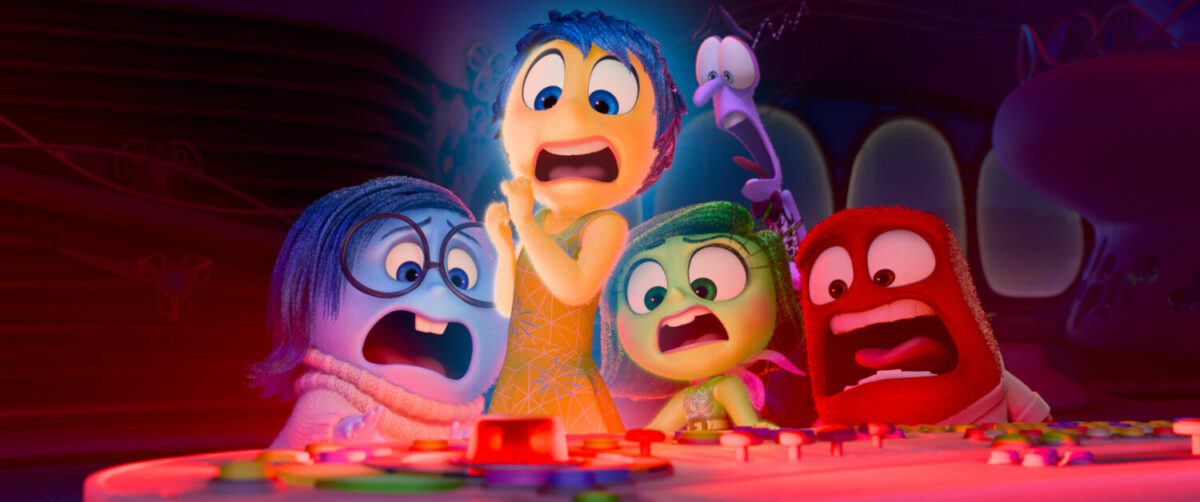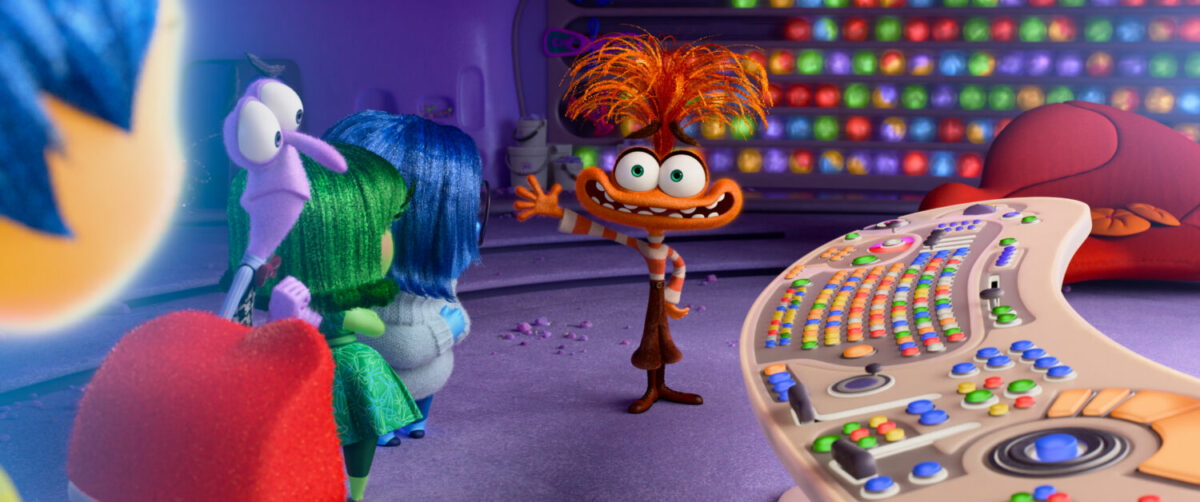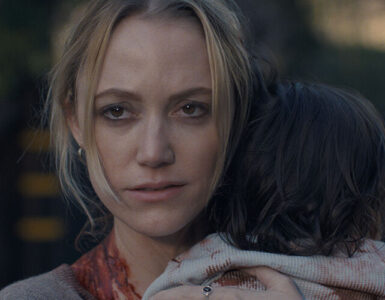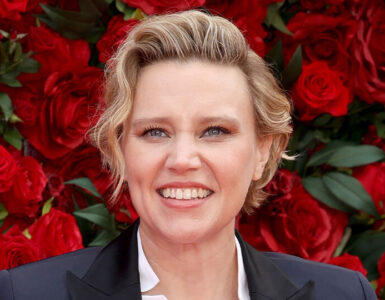Animation studio Pixar has a knack for tugging at our heartstrings. From the bittersweet farewells in Toy Story 3 (2010) to the poignant marriage montage of Up (2009), to the tear-jerking Remember Me scene in Coco (2017), the studio consistently crafts emotionally resonant stories that leave few eyes dry.
Perhaps no Pixar film has mastered this art more effectively than Inside Out (2015), a journey through the complex landscape of human emotions that left audiences both laughing and weeping. The endearing characters, relatable struggles, and the poignant realisation that even sadness plays a crucial role in our lives resonated deeply with viewers of all ages.

While its last few films, Soul (2020), Luca (2021), Turning Red (2022) and Lightyear (2022) didn’t quite pull the right notes, the Disney studio is bringing audiences back to that vibrant world with Inside Out 2, venturing into the tumultuous terrain of adolescence for Riley, who is navigating the challenges of puberty with a whole new cast of emerging emotions. With any sequel, there are bound to be expectations, especially with the beloved original, and the first thing audiences may not realise is that change has already taken place behind the scenes.
The original Inside Out, directed by Pete Docter (Up, Soul) took us on a whimsical journey through the mind of 11-year-old and two years later, much has changed with Riley (Kensington Tallman replacing Kaitlyn Dias from the first movie), whose upheaval from Minnesota to San Francisco then triggered a cascade of emotions who seemingly think things have stabilised, as personified by Joy (Amy Poehler, Parks and Recreation), Sadness (Phyllis Smith, The Office), Fear (Tony Hale, replacing Bill Hader from the first movie), Disgust (Liza Lapira, replacing Mindy Kaling from the first movie), and Anger (Lewis Black, The Daily Show). These characters, each vividly rendered with distinct personalities and hues – from Joy’s sprite-like effervescence to Anger’s fiery demeanour – vie for control at a console in Riley’s brain, reflecting the tumult of her external life.

Inside Out 2, directed by Kelsey Mann (The Good Dinosaur, Onward), dives back into this colourful psychological landscape as Riley steps into her teenage years. The sequel opens with 14-year-old Riley thriving in her passion for hockey and navigating new social dynamics. Her life is punctuated by the sport and her interactions with Valentina (Lilimar, Cleopatra in Space), and a charismatic team captain who introduces both friendship and friction. As Riley attends a pivotal hockey camp with her two best friends, Grace (Grace Lu, Persona 3 Reload) and Bree (Sumayyah Nuriddin-Green) before high school, the emotional equilibrium inside her is disrupted by an unexpected upheaval – puberty.
This transformative phase is marked by the literal demolition of the control room in her mind, making way for new emotions: Anxiety (Maya Hawke, Stranger Things), Embarrassment (Paul Walter Hauser, Cruella), Envy (Ayo Edebiri, The Bear), and Ennui (Adèle Exarchopoulos, Blue Is the Warmest Colour). The last emotion, Nostalgia (June Squibb, Toy Story 4), taking the form of a kind grandma, attempts to enter the console room, only to get ushered out as it is not her time yet.

Led by Anxiety, these newcomers challenge the status quo, pushing the original emotions into unfamiliar territory. The narrative then spirals into an adventurous quest through the corners of Riley’s mind, as the original emotions strive to reclaim their influence and restore her sense of self, now jeopardised by the intrusive thoughts planted by Anxiety.
The stakes are higher, the emotions more complex, and the challenges more daunting as Riley struggles with the physical and emotional changes of puberty, and her inner world navigating the often confusing world of emotions. This will definitely resonate deeply with anyone who remembers the bittersweet trials of growing up, particularly with teen girls who have attended an all-girls school, who are often at the epicentre of such transformative experiences…
Initially, the film sets the stage with a lighter touch of emotional engagement, gradually building to a powerful climax where Riley confronts her evolving sense of self. This exploration reaches its peak in the latter half of the film, fully immersing the audience in a deeply personal journey through Riley’s struggles and triumphs.

Visually, Inside Out 2 dazzles with the enhanced polish expected nearly a decade after its predecessor. The characters and world inside Riley’s head are beautifully rendered, with a level of detail and finish that surpasses the original. Riley herself looks convincingly like a teenager (complete with hormonal acne and braces), reflecting the physical and emotional changes she’s undergoing. While the animation has evolved with the times, it retains the distinct charm and visual language of the first film, ensuring a seamless continuation for returning audiences.
But it’s not just the visuals that have evolved, Riley’s emotional landscape has also expanded with the introduction of four new characters. Maya Hawke’s Anxiety steals the show, a bundle of nervous energy that many viewers will undoubtedly find relatable. Her presence is central to the story, driving much of the conflict and humour. The other new emotions, voiced by a talented ensemble cast, also leave their mark. Ayo Edebiri’s Envy, in cahoots with Anxiety, adds a layer of complexity to the power struggle within Riley’s mind. Adèle Exarchopoulos’ effortlessly cool Ennui and Paul Walter Hauser’s hilarious Embarrassment round out the newcomers, each bringing a unique flavour to the emotional landscape.
The few returning cast also shine, seamlessly picking up where they left off, as Amy Poehler’s Joy remains the optimistic heart of the film, bringing optimism and warmth to every scene. Newcomers Tony Hale and Liza Lapira step into the roles of Fear and Disgust with seamless ease, maintaining the beloved quirks of these characters while adding their own subtle nuances.

Remarkably, despite the crowded emotional scene, the film avoids feeling overwhelming or convoluted and instead emphasises the importance of balance and cooperation among the emotions, highlighting their shared goal: Riley’s well-being. This reminder of the interconnectedness of our feelings, even the seemingly negative ones, delivers a resonant message about the complexity of our inner lives.
The film’s exploration of these universal themes leaves a lasting impression, suggesting that countless other corners of the human experience could be illuminated through the lens of Inside Out. If this sequel is any indication, the possibilities for future instalments are as boundless as the emotions themselves.
GEEK REVIEW SCORE
Summary
Though Inside Out 2’s emotional impact may not be as immediate as its predecessor, it ultimately delivers a nuanced and relatable exploration of teenage struggles, showcasing Pixar’s signature blend of humour, heart, and stunning animation.
Overall
8.9/10-
Story - 8/10
8/10
-
Direction - 8.5/10
8.5/10
-
Characterisation - 10/10
10/10
-
Geek Satisfaction - 9/10
9/10













